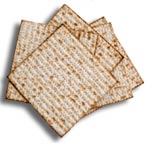
|
|
Injera
is an important part of this shared meal.
|
Bread
is more than just a food. Just think of how the word
is used: A person’s “bread and butter”
is his or her main source of sustenance, while
bread
or
dough
can be cash, plain and simple. When
people “break bread” they share more than
just a meal: They come together in body as well as spirit.
It’s
not surprising that bread is imbued with special meaning.
Since the first raised breads were baked in Egypt around
4,000 B.C., bread has been a vital food source for peoples
around the globe. Over the centuries it has traveled
and evolved, reflecting both the unity and diversity
of human culture, and the ability of people to adapt
to their environment.
On
this site, we talk mainly about the science behind the
tall, tender loaves that most people are familiar with
in the West. But bread comes in countless forms, from
the plump bagels of New York City to the paper-thin
nane silli
eaten by Kurds.

|
|
Women
prepare flour in Nepal.
|
What
kind of bread people make depends on what kind of grain
is available, and that often depends on local climate
and geography. In Ethiopia, for example, the nutritious,
high-protein grain
teff,
which grows well in
the country’s central highlands, is used to make
injera,
the
sour, spongy bread eaten with most meals. Barley, on
the other hand, well-suited for cold climates, is used
in Finland to make
ohrarieska,
a traditional
staple and after-sauna snack.

|
|
Matzoh
|
The
Bible tells of the
matzoh
the Israelites ate
as they fled Egypt. Because the former slaves’
dough had no time to rise, it baked on their backs as
they escaped into the desert. Whether or not the story
is historically accurate, we do know that lifestyle
plays a major role in the kinds of breads people eat.
In central Asia, where both grain and fuel are scarce,
nomads make small, thin rounds that cook quickly over
a fire. To survive long, cold winters, the people of
central Anatolia hang rings of bread from the rafters.
When fresh bread is needed, a ring is brought down,
moistened with water, and soon is ready to eat.
Whatever
kind of bread you’re used to, a little bit of science
can make you a better baker, and also make your time
in the kitchen more fun.
To
find out more, check out these
links
.
|



